A hundred miles, a thousand lessons
By Luke Vance ’21, a sustainability studies major from Boise, Idaho
Our fleet of canoes drifting aimlessly. Or as aimlessly as one can when the only way to go is downstream. We were an hour outside of Ligonier, Indiana, the small town where we had launched our flotilla of aluminum craft. Tom reached into the dry bag that featured a large smiley face drawn on the side and brought out a bar of endangered species chocolate. A guilt free snack before we continued our paddle down the Elkhart River and eventually out onto Lake Michigan. Our goal was to make it to Lake Michigan the following Friday, a trip of around a hundred miles in eight days. Morale boosting snacks would be essential.
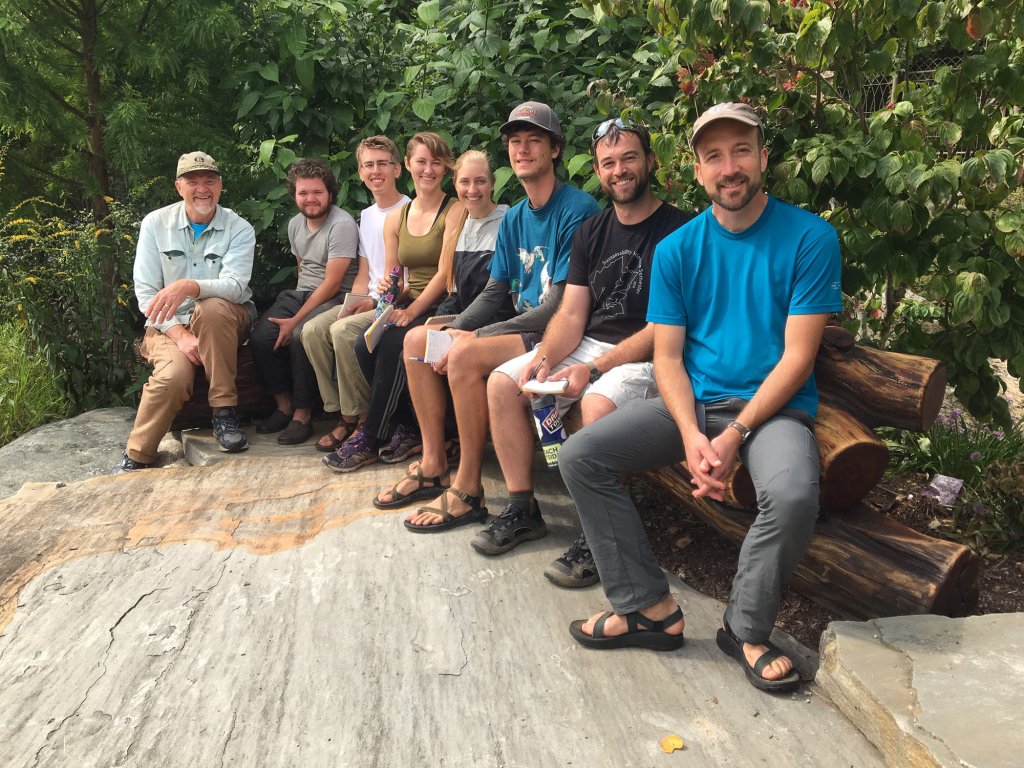
This was not the first time students from Goshen College had traveled the watershed from start to finish. This trip has been a critical part of the curriculum for the Merry Lea-based Sustainability Leadership Semester for around eight years. This group of five students coming from across the country, representing four different majors, and three different graduating classes, all live and learn together at Merry Lea Environmental Learning Center for an entire semester of hands-on learning. The highlight, of course, is the watershed canoe trip.
We didn’t get to sit around for long. We had an appointment to keep at Benton Mennonite Church where we were sleeping that night. A member of the church was to give us an overview of Potawatomi History. The Potawatomi are the indigenous people in this part of Indiana. It was our way of reminding ourselves at the beginning of our trip that we are not the first people to inhabit this land. The Potowatami were forced off their land by the government over the course of many years, and a group also experienced a forced migration called the Trail of Death (not to be confused with the Trail of Tears) from northern Indiana into eastern Kansas. It was a sobering reminder that the history of the United States is not always a friendly one.
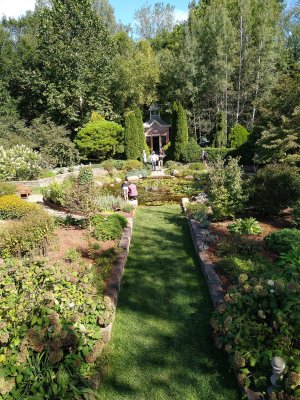
The next morning we got back on the river, with a stop planned for lunch at the Defries Calendar Garden. Designed as a circular calendar where plants flower according to their month, this garden was a welcome place to take a rest and sit among the goldenrod and aster that were flowering on our Sept. 7 visit date. This day took us through several millraces that indicate significant human interaction with the river in the past. Now overgrown and turning back into marshland, these straightaways in the water are a look at the natural world restoring itself following industrialization. Goshen was the end goal of the day and after paddling across the Dam Pond, we knew we were just about finished with the day’s journey.
After our night in Goshen, we set out for the Elkhart Environmental Center. This environmental education center is an old waste dump that was decommissioned and turned into a space of restoration and education. It offers a fantastic example of natural resilience: native plants and prairies coming back and thriving on a piece of land that was at one point burning from the pollution. Jamison Czarnecki, the center supervisor, gave us a tour of the grounds and told us about the history and restoration from waste dump to environmental center.
The next morning we flowed out into the St Joseph River proper after three days on the Elkhart. Melissa Kinsey, a former Goshen College administrator and professor, spoke to us about her new position at the Wellfield Gardens as an environmental educator. The gardens, rather than being identified as a city park or nature area, are described as a living museum. The experience is intended to be a curated one. Wellfield Gardens hosts many school groups throughout the year and teaches them about ecology and the natural world as a part of their mission statement to “inspire creativity and lifelong learning.”
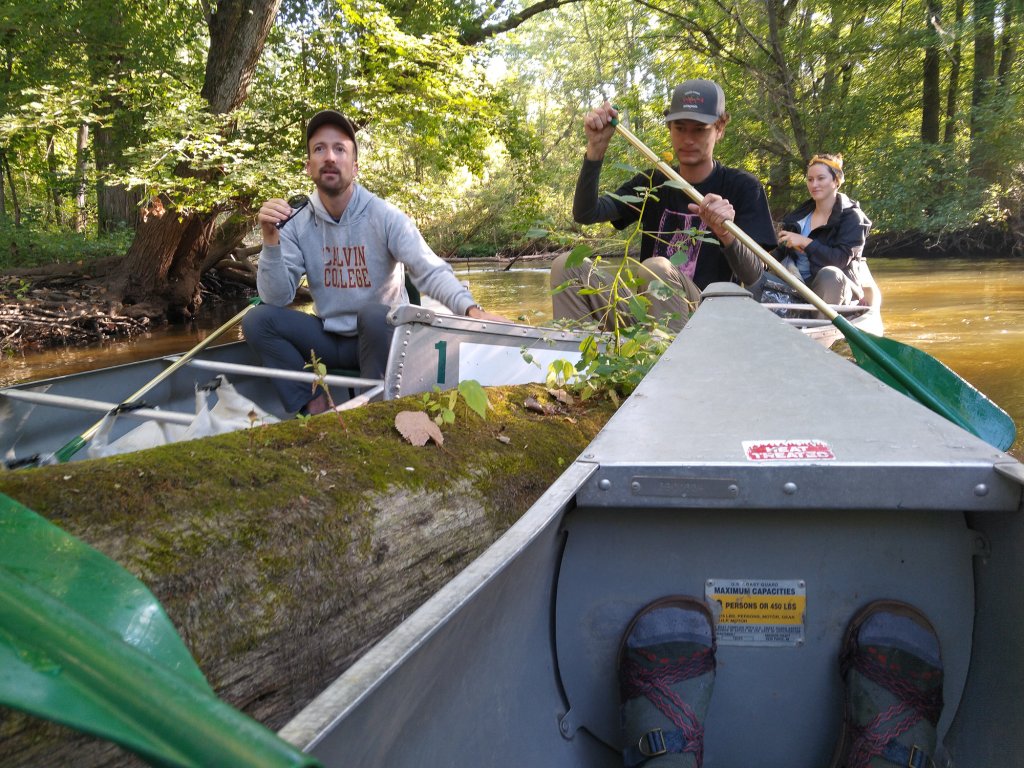
That evening Indiana University-South Bend (IUSB) hosted sustainability students from the local universities of St. Mary’s, Notre Dame and IUSB. This functioned as a small sustainability summit as we discussed what sustainable practices were going on at our schools and how we as students could work to get involved both on campus and on larger scales. This summit served as a reminder that Goshen’s sustainability program focuses on hands-on education and practical solutions. We Goshen students proudly and effectively talked with others about what Goshen College has been doing to become more sustainable.
We certainly grew accustomed to carrying our canoes as well as paddling them! The day after IUSB, we encountered two large dams with long portages. Fortunately, we had two educational stops along the way to rest. Our first was at St. Mary’s to discuss their plans to start a sustainable farm on campus and later that afternoon at the Notre Dame LEEF facility. The LEEF facility provides an environment to study the dynamics of streams, lakes and wetlands on a larger scale than can be achieved in a lab.
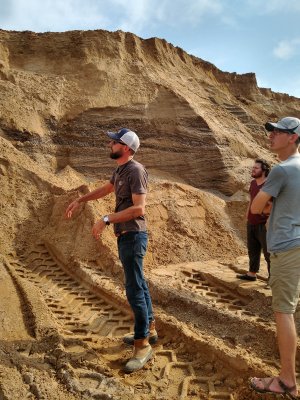
Day six involved a longer morning visit to a gravel pit. This processing center had every potential to be a major polluter of sediments and machine runoff directly into the river less than a mile away. As students we all expected some older guy to come out and talk about heavy equipment operation and how the environmentalists were driving him out of business. Who we got was Jared, a gravel pit cowboy. With a thick southern accent and a twinkle in his eye he talked about how they actually recycle the 6000 gallons of water they use every minute in their daily operations. He also talked about plans to use the property after they could no longer mine it for gravel and sand. His plans all reinvest into the land and makes it valuable to society again.
The canoeing that day involved another portage around a dam, before we docked at Fernwood Botanical Garden on schedule. Fernwood works to educate the community and preserve a historic natural place. The highlight of the night was the rope swing out into the river, which we all enthusiastically employed.
After we went around yet another dam the following day, our speaker from the Michigan Department of Natural Resources talked about fisheries and the fish populations of the tributaries into Lake Michigan as well as in the lake itself. Discussing the system of fish ladders over the numerous dams was a highlight of the conversation.
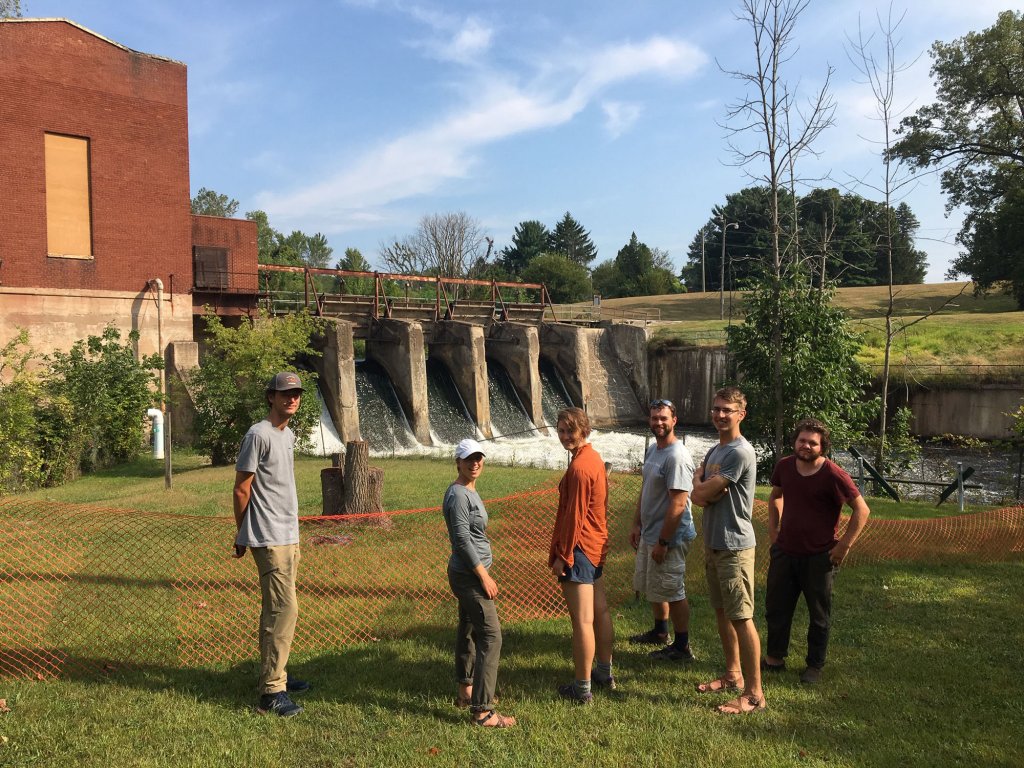
Below the dam the current was swift and we made it to our stop at Andrews University in time to talk to them about sustainability projects on campus. Andrews once had a large dairy farm, where students could work their way through school by milking cows. They recently sold off their entire herd and are reinvesting their time and infrastructure into the study of smaller scale and more sustainable agriculture.
We left our campsite at Andrews late the next morning due to rain, but we still came out onto Lake Michigan around 2 p.m. The waves were getting large as we came up the shipping channel and out onto the open water. It was a special moment.
Our journey had been eight days and taken us over a hundred miles. For the water beneath us though it could have taken years. Spending its time in the life cycles of plants, birds, or fish, getting stuck behind dams or just plain taking its time, before the water finally comes back into the watershed and eventually the lake.




